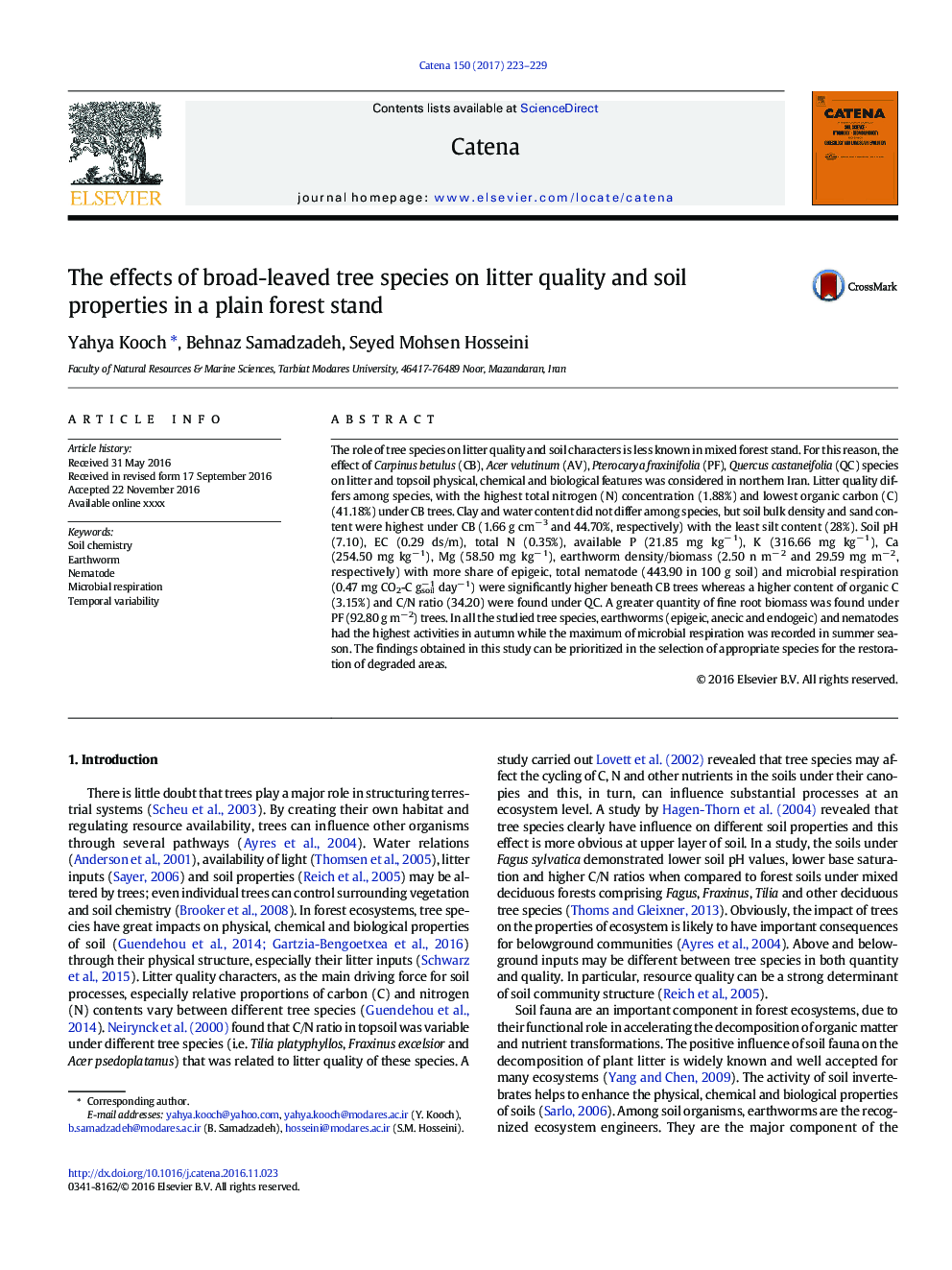| Article ID | Journal | Published Year | Pages | File Type |
|---|---|---|---|---|
| 6407662 | CATENA | 2017 | 7 Pages |
Abstract
The role of tree species on litter quality and soil characters is less known in mixed forest stand. For this reason, the effect of Carpinus betulus (CB), Acer velutinum (AV), Pterocarya fraxinifolia (PF), Quercus castaneifolia (QC) species on litter and topsoil physical, chemical and biological features was considered in northern Iran. Litter quality differs among species, with the highest total nitrogen (N) concentration (1.88%) and lowest organic carbon (C) (41.18%) under CB trees. Clay and water content did not differ among species, but soil bulk density and sand content were highest under CB (1.66 g cmâ 3 and 44.70%, respectively) with the least silt content (28%). Soil pH (7.10), EC (0.29 ds/m), total N (0.35%), available P (21.85 mg kgâ 1), K (316.66 mg kgâ 1), Ca (254.50 mg kgâ 1), Mg (58.50 mg kgâ 1), earthworm density/biomass (2.50 n mâ 2 and 29.59 mg mâ 2, respectively) with more share of epigeic, total nematode (443.90 in 100 g soil) and microbial respiration (0.47 mg CO2-C gsoilâ 1 dayâ 1) were significantly higher beneath CB trees whereas a higher content of organic C (3.15%) and C/N ratio (34.20) were found under QC. A greater quantity of fine root biomass was found under PF (92.80 g mâ 2) trees. In all the studied tree species, earthworms (epigeic, anecic and endogeic) and nematodes had the highest activities in autumn while the maximum of microbial respiration was recorded in summer season. The findings obtained in this study can be prioritized in the selection of appropriate species for the restoration of degraded areas.
Related Topics
Physical Sciences and Engineering
Earth and Planetary Sciences
Earth-Surface Processes
Authors
Yahya Kooch, Behnaz Samadzadeh, Seyed Mohsen Hosseini,
